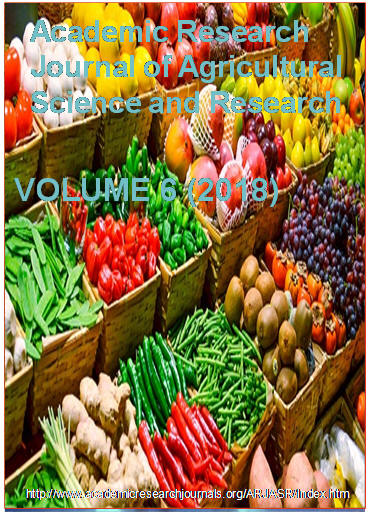| ARJASR |
Academic Research Journal of
Agricultural Science and Research |
||||||||||||||||||||||
|
Academic Research Journal of Agricultural Science and Research Vol. 6(3), pp. 193-201. April, 2018. ISSN: 2360-7874 DOI: 10.14662/ARJASRD2018.009 Full Length Research Performance of Composite Crosse Populations of Wheat for Yield, Resistance to Yellow Rust and other important traits under Organic Farming
Belay Garoma1*, Edith Lammerts2 and Edwin Nuijten2
1Bako National Maize Research Centre, Ethiopia Institute of Agricultural Research, P.Box 03, Bako, Ethiopia &2Wageningen plant breeding group, Wageningen University, NL-6708, the Netherlands ⃰ Corresponding author: belaygaroma@gmail.com
Accepted 14 March 2018
Organic agriculture requires robust variety such as composite crossed population (CCP) is one of strategy that suitable under low input and organic conditions to buffer against fluctuation environments due to their genetic diversity.The objective of the study was to evaluate the performance of eight composite crossed population of wheat along with check for grain yield, agronomic traits and resistance to yellow rust disease under organic condition in a randomized complete block design with three replications. Result of analysis variance showed no significant difference among wheat genotypes for grain yield (p= 0.45), whereas a highly significant (p=0.002) difference for TKW. CCP of HU-13-YQMS showed the highest TKW (43.23 g) and the lowest recorded for the check (37.43 g). The genetic potential of all wheat composite crossed population showed low yield performance under organic farming, this might be due to slow released of nutrient under organic condition. A highly significant difference (P<0.001) was observed among wheat genotypes for the yellow rust incidence and severity across growth stages. The highest yellow rust severity (6.01) and incidence (92.27 %) was recorded on the check (pure line) and followed by the population HU-08-UK comp and HU-08-YQMS at milk stage. CCP of HU-13-YQMS showed comparable grain yield, very low disease incidence and severity, indicating that genetic diversity within CCP increased the resilience of the population to limit the spread of disease expansion across growth stages than check under organic condition. Furthermore, exploitation of additional source of genetic diversity of wheat will be required and beneficial traits may be combined to develop stable and resiliencecultivar to buffer against fluctuating of environments under low input and organic conditions in their ecological farming system.
Key words: Organic condition, composite cross populations, resilience, grain yield, yellow rust
How to cite this article: Garoma B, Lammerts E, Nuijten E (2018).Performance of Composite Crosse Populations of Wheat for Yield, Resistance to Yellow Rust and other important traits under Organic Farming. Acad. Res. J. Agri. Sci. Res. 6(3): 193-201
|
|
|||||||||||||||||||||
